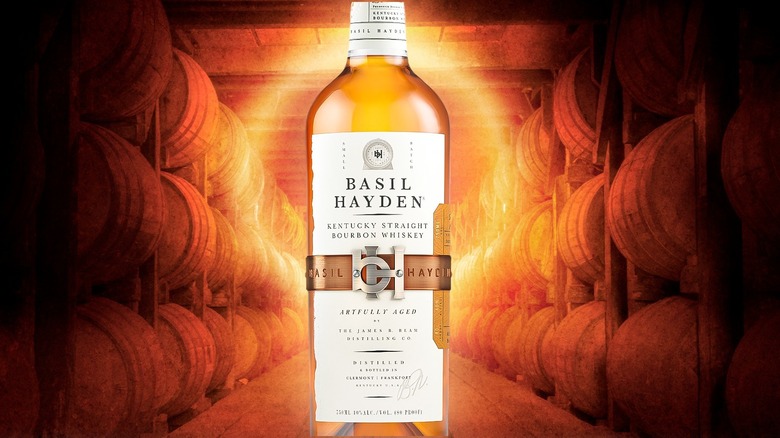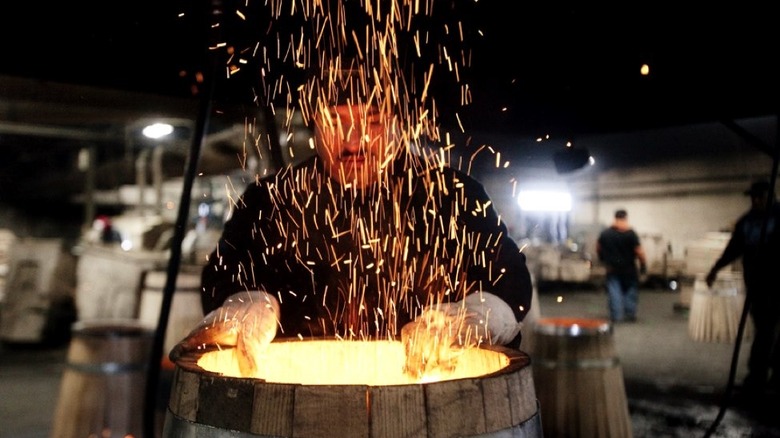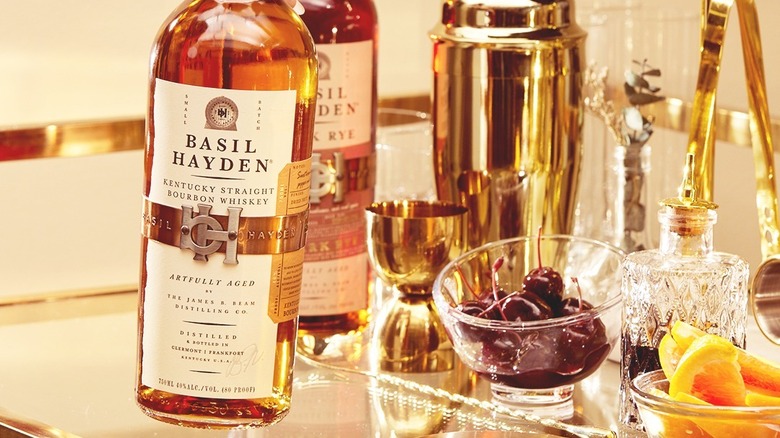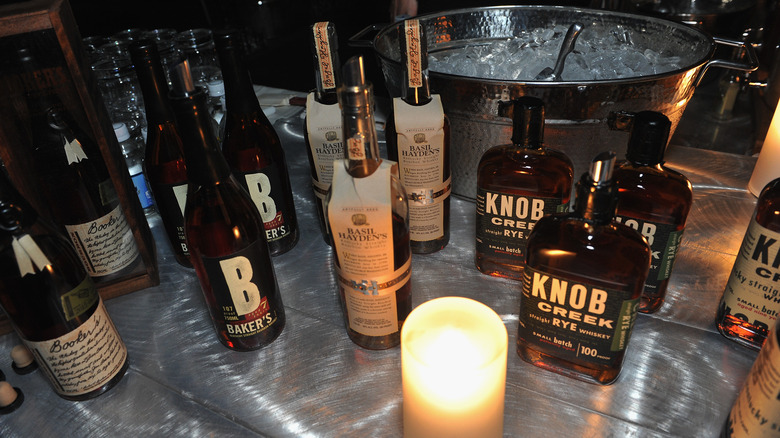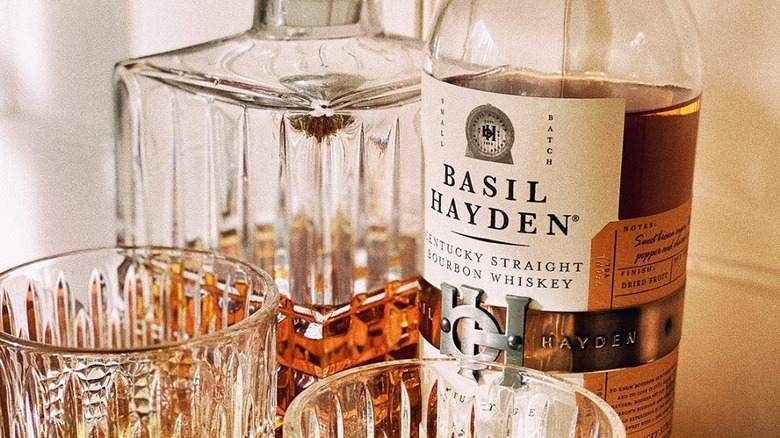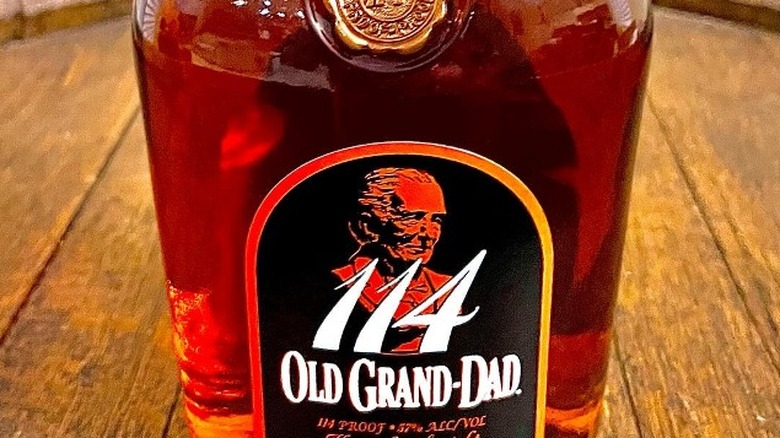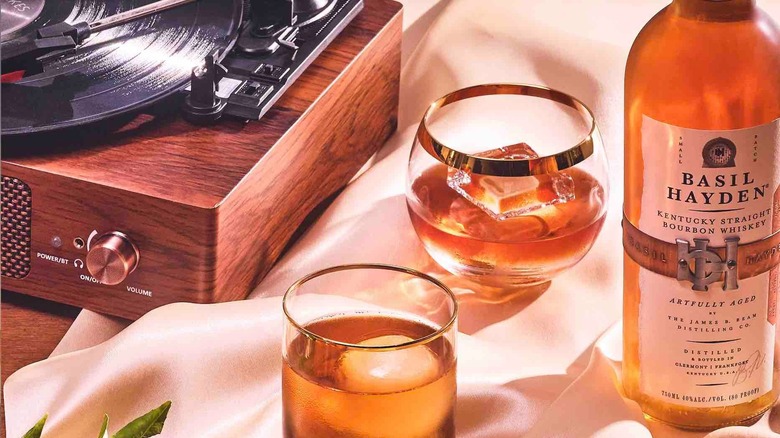Basil Hayden Kentucky Straight Bourbon: The Ultimate Bottle Guide
There is no doubt Basil Hayden is one of the most famous names in the bourbon market. Known for its smoothness and clean-tasting profile, yet it often splits opinions among whiskey lovers. Crafted in the heart of Kentucky, it has often been seen as the ideal introductory bourbon for budding connoisseurs.
With classic notes of vanilla, oak, and subtle spiciness, there is no doubt Basil Hayden is a significant step up from what you'll find on the bottom shelf. But why does it divide opinion, and is it the right whiskey for you? Here, we'll have an answer to all your questions.
With our experience of enjoying Basil Hayden on multiple occasions, we'll give you an insight into its tasting notes and how to enjoy this popular bourbon. Along with this, we'll also give you some fascinating insights into its history and production. Join us as we journey deep into everything that makes Basil Hayden one of the most accessible bourbons on any liquor shelf.
History of Basil Hayden
Some bourbons have a history dating back hundreds of years, so by that measure, Basil Hayden is a relative newcomer. Making its first appearance in 1992, it was created by the legendary distiller Booker Noe. The inspiration behind the drink was Meredith Basil Hayden Sr., a farmer who made his bourbon with a high percentage of rye. Booker Noe used this as inspiration to make a high-rye whiskey with a more delicate flavor profile compared to many of its rivals. The experiment was a success, and ever since the early '90s, Basil Hayden has become synonymous with smooth bourbon, which has undoubtedly helped its immense popularity.
Booker Noe wasn't just any old distiller. Being the grandson of Jim Beam, he had bourbon in his blood. But, rather than relying on his family history, Booker carved out his own legend. Along with Basil Hayden, he also created Booker's bourbon under his name, which is another highly revered spirit. Noe also coined the phrase "small batch," which helped to give uncut bourbon a more premium feel. Small-batch bourbons helped revive the industry after the increasing popularity of vodka and gin had hurt sales throughout the '60s and '70s. The creation of Basil Hayden was one of his last acts before he retired in the same year as its release.
How is Basil Hayden made?
Basil Hayden Kentucky straight bourbon is meticulously made through a time-honored whiskey-making process at the James B. Beam Distilling Company. The first part of the process comes from selecting high-quality grain, and in the case of Basil Hayden, that includes a high percentage of rye. These grains are combined with limestone-filtered water to create the mash. After being heated, yeast is added to initiate the fermentation process, which helps convert the sugars found in the grain to alcohol. In what can be confusing terms to those new to the process, this fermentation creates "distiller's beer" before this liquid is then distilled twice to create what's called "high wine." For Basil Hayden, the first distillation happens in a copper still before it undergoes a second round in a pot still, called a doubler.
This liquid is then aged in charred oak barrels, where it will undergo the maturation process changing it into the Kentucky whiskey we know and love. Whereas most standard bourbons will have a rye percentage hovering around between 15% and 20%, Basil Hayden's is dialed up to 27%, making for a unique mash bill. The rest of the mixture comprises 63% corn and 10% barley all of which contribute to a flavor profile and spiciness not found in many other expressions. Along with the thorough process, it all adds up to a high-quality whiskey that stands out from the crowd.
What does Basil Hayden taste like?
With the high rye percentage, you'd be forgiven for thinking this would be a powerful and robust bourbon. However, the opposite is true. While the spice is notable on the palate, Basil Hayden is one of the smoothest whiskeys around. But, before we dive deeper into the palate, let's talk about the nose. There is a delightful range of smells, with mixed berries and hints of peach being the most obvious. Beyond that, you get some expected pepper due to the rye content. The relatively low 80-proof means the nose isn't overpowering but it's still one of the best low-proof bourbons you can buy.
On the palate, Basil Hayden provides a light-tasting experience, which is to be expected with a lower ABV. Many common bourbon-tasting notes shine, including vanilla, oak, and pepper. Those hoping for a big pepper kick may be a little disappointed, and this is where opinions can be divided. Some love its light and smooth profile, whereas others criticize it for a lack of depth. Our opinion lies somewhere in the middle. It lacks the complexity of many other bourbons at this price point, yet it's a great pour for when you want an approachable and easy-drinking bourbon. It's ideal for lazy summer drinking rather than those cold winter nights.
It's a member of the Jim Beam family
That iconic bottle of Jim Beam found on nearly every liquor shelf is far from the only expression made at its distillery. Along with its impressive range of whiskeys, James B. Beam Distilling Company is also responsible for producing many other brands, including Basil Hayden. Founded in 1795 by Jacob Beam, the distillery has remained in family hands for over two centuries — and continues to make some wonderful expressions. Along with Basil Hayden, the distillery owns Baker's, Little Book, Legent, Booker's, Knob Creek, and Old Grand-Dad, among several others. The story of the Beam ownership doesn't end there, as the distilling company is a part of Beam Suntory, a global leader in spirits.
Basil Hayden Kentucky straight bourbon also forms a part of Jim Beam's small batch collection. These are four small-batch bourbons from the distillery that all have their distinctive flavor profile, and trying each of them is a great way to explore different types of bourbon. Along with Basil Hayden, the other two are Baker's 7-year, and Knob Creek 9-year.
Basil Hayden vs. Knob Creek, Booker's, and Baker's
We mentioned them all there, so let's see how these small-batch bourbons compare. While all four bourbons share a similar heritage, they each possess distinct characteristics. Basil Hayden is the lightest and most delicate of the collection and stands in stark contrast to the more robust Knob Creek 9-year. With its higher proof of 100 and longer aging process, it offers an intense tasting experience dominated by spice along with its sweeter vanilla notes. With an average price of just over $35, it's also excellent value for money and one of the best bourbons under $50.
Booker's is another robust bourbon. The proof can vary slightly but is usually around 125. It has an intense caramel flavor but also gives you a complex flavor with toasted nuts and a hint of smoke also being noticeable on the palate. The only downside is that it's the most expensive of the four at an average price of nearly $140. Baker's 7-year completes the quartet. It still has a bold flavor with plenty of spice but isn't overpowering. It is even nuttier than Booker's but offers plenty of sweetness with vanilla and cherry. At an average price of $70, it's pretty good value. If you want something smooth and mellow, choose Basil Hayden. If you want something with a little more character, any of the others will satisfy your palate.
Basil Hayden vs. Basil Hayden Toast
There are a few variations of the classic Basil Hayden, with a relative newcomer being Basil Hayden Toast, released in 2021. It gets its name because it has a secondary finish in toasted barrels, but that isn't the only difference. The most significant is that the 27% of rye found in the Kentucky straight bourbon is replaced by 27% brown rice. But, what do these two changes do to the whiskey? Firstly, the additional finishing helps to give it a richer caramelized flavor, along with a light smoke.
Using brown rice instead of rye removes much of the spiciness from the expression. It also gives it a more delicate profile with a creamier mouthfeel. With the already mellow and smooth nature of the flagship bourbon, the toast is very easy to drink. It also perfectly complements havarti cheese for those who love to pair their bourbon with food. Is it better than the classic Basil Hayden? We think it's a close call, but with it being around $15 more expensive, many will prefer to stick to its more accessible counterpart. Both expressions are good bourbons, and it's worth trying both. There are also several other variations of Basil Hayden for those looking to explore the brand further.
Is Basil Hayden expensive?
Of course, whether something is expensive or not is subjective. However, we'd say that Basil Hayden sits in the mid-level price range. At an average cost of a little over $40, it's comfortably pricier than budget bourbons. However, it is still affordable for most people who want to enjoy high-quality whiskey without a premium price tag. Not only is it affordable, but you can find it pretty much everywhere, and it will often be offered for around $10 cheaper than its average price. If that's too expensive for you, many liquor stores stock a half-bottle of Basil Hayden that is often priced under $25.
A heart-breaking moment for any budding enthusiast is spending a little extra on whiskey only to realize it's not good value for money. You'll have no such worries when buying a bottle of Basil Hayden. Its impressive smoothness, lightness, and delicate flavor profile appeal to a wide range of palates so your purchase won't disappoint you. The bottom line is that while Basil Hayden may not be the cheapest bourbon on the liquor shelf, its reasonable price point makes it an attractive option for anyone looking to take a significant step up in quality.
How to drink Basil Hayden
Spirits should be enjoyed however you want to, but try enjoying Basil Hayden neat, without ice, for a few reasons. The main reason for doing so is Basil Hayden's biggest weakness: lack of depth. Due to this, its flavor can easily get lost when added to cocktails and mixers. And, with its low proof, adding ice to the drink can dilute it and dull those flavors even more. Want to add whiskey to cocktails? If so, we'd recommend getting something cheaper or more robust than Basil Hayden.
To properly savor Basil Hayden, or any spirit, you want to choose your glassware correctly. And for this bourbon, you'll want a snifter glass. These have short stems, a wider body, and a narrow opening. This allows you to swill the spirit, which helps to concentrate the aromas. The Glencairn glass is commonly used for Scotch whisky, but there are many similar examples. After your first tasting, switch to a tumbler if you don't enjoy drinking from a snifter glass. Enjoying it straight may be the recommendation but it can still be enjoyed in cocktails, especially if you prefer your whiskey not to dominate the tasting experience.
Named after the father of high rye bourbon
We've talked about Jim Beam and Booker Noe, but you may have wondered who Basil Hayden is. We briefly touched on him earlier, but his full name was Meredith Basil Hayden Sr. He's a historical figure and has commonly been known as the "King of High Rye Bourbon." Born in Maryland in the mid-18th century, he was a pioneer who, as you may have guessed, became famous for having a high percentage of rye in his mash bills. However, his mark on the bourbon world goes well beyond that, as he also helped found Bardstown in Kentucky. Known as the world's bourbon capital, it has become the home of many brands, including Jim Beam, Willett, and Heaven Hill.
The use of rye was a revelation in the bourbon community as it showed the drink could differ from the corn-heavy mash bills that dominated the landscape. Hayden's bourbon has a unique flavor profile, especially with its increased spiciness, and it has influenced many other whiskey makers. His legacy continued long after his death. Having died in 1804, his grandson created Old Grand-Dad whiskey in 1885, with Basil Hayden's image adorning its bottles. Both of these bourbons honor the legacy of a whiskey pioneer whose innovative spirit inspires bourbon enthusiasts worldwide.
It recently had a major redesign
There are many older bourbon drinkers for whom this brand will always be Basil Hayden's, as that, was the name from its creation in 1992 until rebranding in 2021. That year, the brand transformed its iconic bottle by dropping the apostrophe in Hayden's. The old bottle had two highly distinctive features: the protruding paper label and the metal band around the middle. The paper label made it look old-fashioned, and with many younger bourbon drinkers, that feature wasn't seen as a good thing. The protruding beige text-heavy label was replaced with a non-protruding white label with minimal text, to make it look more modern. It's a fresher look, but lovers of the old bottle design will be happy the brand kept the distinctive metal band around the middle.
Not only was it kept, but it was made wider, with the "BH" on the front being much larger. In rebranding, Basil Hayden found a great middle-ground for bringing the brand into the modern world while preserving its heritage and character. Some may prefer the old bottle but consumer tests have shown people prefer the new design. Many modern rebrandings can look soulless, but we think Basil Hayden did a pretty good job here. The new design not only enhances the visual appeal of Basil Hayden but also reflects its status as a premium bourbon with timeless appeal.
Methodology
The opinion in this article comes from personal experience from the many occasions I've had the pleasure of drinking Basil Hayden. The historical aspects of this bottle guide were heavily researched with each back backed by a reputable source. The result of these two approaches yields a thorough bottle guide that you can trust.
